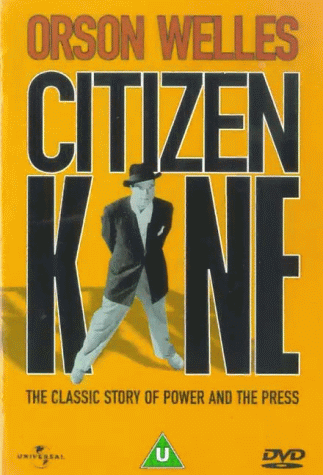By Steve Vivona
Universal (Region 2), $30 U.S.
Back when laserdisc was the format of choice (in the stone age) hardcore fans were able to look to Japanese import discs to find favorite films that were not available domestically. Well the purveyors of the new collectible format of choice (namely DVD) didn't like that, so we have a little thing called region coding, which simply stated, does not allow you to play DVDs manufactured outside the region you live in.
Here in the U.S. we fall into Region 1, which covers North America and Canada. If we purchase a DVD from Japan or the U.K. we're out of luck. Ah, but DVD fans are a tough lot. A number of companies manufacture multi-region players (which is great as long as the DVD is produced in the NTSC standard). U.K. discs are PAL and in order to view them you'd still need a converter (and they are extremely expensive). Those lucky enough to own the Apex 600A with the infamous loophole menu can change the standard as well as the region. The only frustrating drawback is that anamorphic PAL DVDs will not unsqueeze and therefore look stretched (for lack of a better term) on the Apex.
Also many DVD-ROMs can change regions and standards with a little help from some software thats available for download over the internet. Happily they will play anamorphic PAL discs with no distortion.
I've scoured the world for DVDs not available domestically. While its safe to say that Region 1 fare blows away Region 2 product, there are many classic films available in Region 2 that are not available here and will not be for the foreseeable future. In Japan titles like "King Kong," "Gunga Din" and "Dr. Jekyll and Mr. Hyde" (1932) are available. In the U.K., "Citizen Kane," perhaps the greatest film ever made, is available while it languishes here "in need of restoration." Well I have the U.K. DVD and it looks fine to me.
"Citizen Kane" needs no introduction. Made by a 25 year-old upstart named Orson Welles it tells the story of the rise and fall of millionaire publisher Charles Foster Kane (a thinly disguised version of William Randolph Hearst). The film was groundbreaking in its camera, lighting and editing techniques, and set a new standard for how films were made. Welles' technical brilliance is outshone only by his performance of a man who had everything, but secretly longed for the trappings of a childhood forever denied to him.
Welles never eclipsed the greatness of his initial effort and throughout his career he had a contentious relationship with the studios. By the fifties no one would bankroll a Welles production and he was forced to use money from various acting jobs to produce his films. "Citizen Kane" stands as a testament to how important young minds and fresh ideas are to filmmaking. Welles took a static camera and made it a real participant in his films. His sweeping moves, bizarre angles and deft use of light and shadow made any scene, however talky, exciting and interesting.
Apparently Universal has the overseas distribution rights to "Kane" and they have provided a nice presentation of the film. Quality-wise the only thing I can compare it to is the Turner laserdisc (which I will never get rid of because it's signed by one of the film's stars, Ruth Warrick). The image is a little soft but otherwise solid and free of grain. Im sure there will eventually be a superior presentation domestically, possibly with extras (Warner has the rights to all the Turner films now). The only extra is a great trailer narrated by Welles that is atypical for its time.
|

